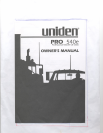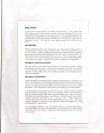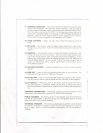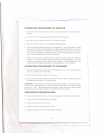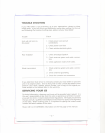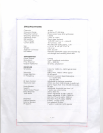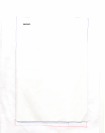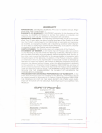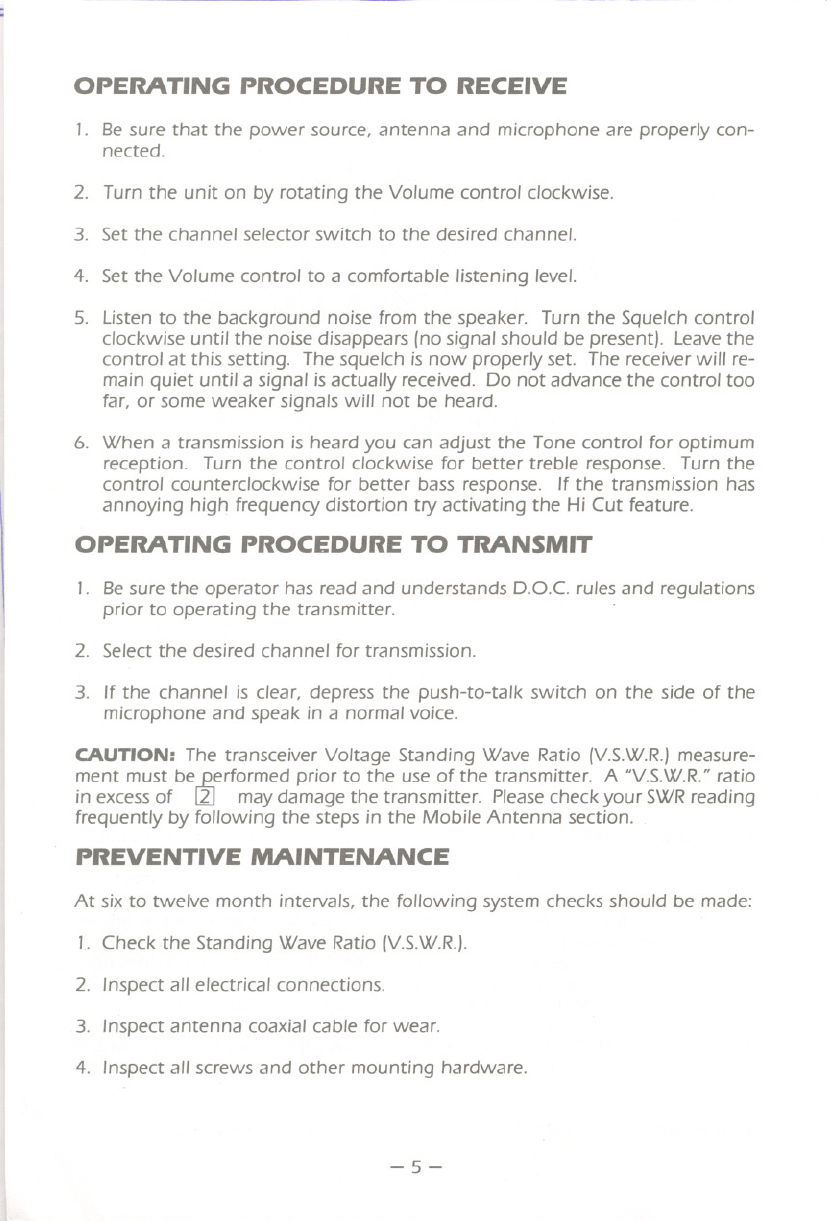
<::
~
~._-
OPERATING PROCEDURE TO RECEIVE
1. Be sure that the power source, antenna and microphone are properly con-
nected.
2. Turn the unit on by rotating the Volume control clockwise.
3. Set the channel selector switch to the desired channel.
4. Set the Volume control to a comfortable listening level.
5. Listen to the background noise from the speaker. Turn the Squelch control
clockwise until the noise disappears (no signal should be present). Leavethe
control at this setting. The squelch is now properly set. The receiver will re-
main quiet until a signal is actually received. Do not advance the control too
far, or some weaker signals will not be heard.
6. When a transmission is heard you can adjust the Tone control for optimum
reception. Turn the control clockwise for better treble response. Turn the
control counterclockwise for better bass response. If the transmission has
annoying high frequency distortion try activating the Hi Cut feature.
OPERATING PROCEDURE TO TRANSMIT
1. Be sure the operator has read and understands D.G.C rules and regulations
prior to operating the transmitter.
2. Select the desired channel for transmission.
3. If the channel is clear, depress the push-to-talk switch on the side of the
microphone and speak in a normal voice.
CAUTION: The transceiver Voltage Standing Wave Ratio (V.S.W.R.)measure-
ment must beJ2.erformed prior to the use of the transmitter. A "V.S.W.R."ratio
in excess of l2J may damage the transmitter. Please check your SWRreading
frequently by following the steps in the Mobile Antenna section.
PREVENTIVE MAINTENANCE
At six to twelve month inteNals, the following system checks should be made:
L Check the Standing Wave Ratio (V.S.W.R.).
2. Inspect all electrical connections.
3. Inspect antenna coaxial cable for wear.
4. Inspect all screws and other mounting hardware.
-5-
1
~
T
--- - - -
::::r=-
r



